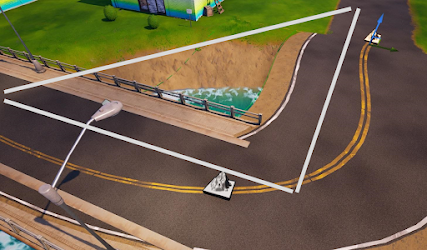Trigonometry is a concept which shows the relationship between the sides and angles in a right angled triangle. This helps us to find unknown sides and angles when we have limited information. But to before we get into this, we need to learn how to label the sides of a triangle in trigonometry.
The side opposite to the right angle (the longest side of the triangle) is called the hypotenuse,
How the other 2 sides are labelled depends on the angle we choose (other than the right-angle). the side opposite to the angle chosen is called 'opposite' and the remaining angle is called 'adjacent'.
Here, the angle opposite to the angle in blue, which we are considering as the angle we need, is labelled 'opposite' and the remaining angle 'adjacent'.
However, should the angle needed change, these 2 labels also change.
Now that we know how to label, lets look at the relationship between these. There are 3 formulas that defines this for us which can be quite easily decoded from the famous phrase,
SOH CAH TOA. Hear this fairly often right? The three parts in this phrase represent 3 separate formulas which we can use tp find missing sides or angles. They are,
By looking at these, most of you will be able to recognize the functions that appear on the left had side of each equation but what some might not be familiar with is the little oval shape right next to it. But don't feel intimidated by it, its just an ancient Greek letter used to represent angles in mathematics. So here, it is used to refer to the angle we use in our equation.
These formulas can be used find an angle if 2 sides are gives and to find a side if 1 other side and 1 angle is given. Which formula to use depends on the question. For example,
In this question, Only the opposite and the hypotenuse are given and it is asked to find an angle. We choose the formula concerning the 2 sides given. The formula with opposite and hypotenuse is the sin formula so we use it here. Once the formula is chosen, the next part is quite simple. we substitute the information we know and solve to find what we don't know.
Note: for those of who wondering why and how sin changed to sin inverse, it is by the same principal of changing plus to minus and multiplication to division when taking to the other side of equation. We took sin to other side of equation to find theta and so it changes to its opposite function - sin inverse, and this will be the same for the other functions, cos and tan.
Lets look at another example of trigonometry but this time of finding an unknown side when 1 side and 1 angle is given.
The sides concerned (the side we know and the side to be found) are adjacent and hypotenuse so we choose the cos formula. But when we substitute the values, you will notice that this doesn't have a clear answer like the last one.
Not to worry, we can solve this little problem by using an algebraic concept and cross multiplying it. After cross multiplying, its just a matter of solving to get the answer.
Note: we don't take inverse of function here because it is not taken separately but as a whole. It was originally a multiplication so when we took to the other side, it changed to division.
Anyone who finds it difficult to read all these or want to understand better can watch the video below
Congratulations! you have made it to the end of this lesson but mathematics is a very practical subject and doing questions on your own is very important so be sure to finish the worksheet and quiz below.
Worksheet:
Quiz:
https://kahoot.it/challenge/01827560?challenge-id=fce05bca-e50a-4334-bddd-75cf60734864_1713978090216
Or go to Kahoot and use the code 01827560
All the best!











Nice 💯💜
ReplyDeleteLove your work
ReplyDeleteExtraordinary 🤩
ReplyDelete